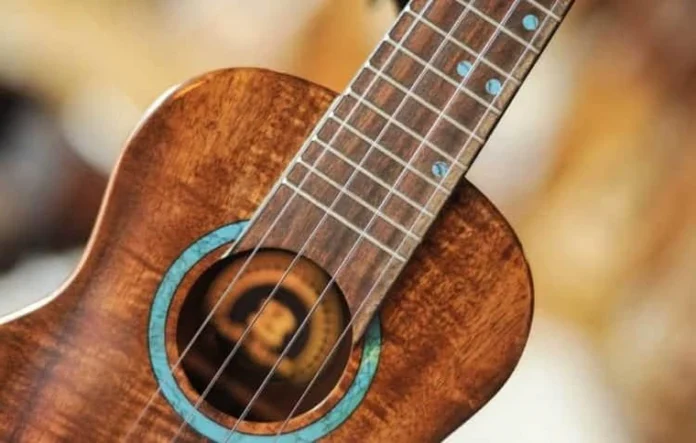Choosing the right ukulele is not just about its appearance and general characteristics. Often overlooked, but crucial, are the strings within the instrument that generate sound. Determining the best strings to opt for is crucial.
Many people assume that such a simple instrument won’t have extensive characteristics. After all, we’re almost always talking about the ukulele.
The division into soprano ukulele or other varieties of this instrument – yes, that’s a common figure of speech. But not very often do we refer to its full, proper name. That’s a shame, because it would make it easier for many people to recognize the strings that are there.
The ukulele and guitar are both stringed instruments, but they differ in several ways. The ukulele is smaller and has four strings, typically tuned to G, C, E, and A, while the guitar is larger and usually has six strings.
The ukulele generally produces a lighter, brighter sound, making it a popular choice for folk and island music, while the guitar’s larger size and range allow for a broader spectrum of musical styles.
As for which is easier to play, it often depends on personal preference and individual comfort. The ukulele is often considered more beginner-friendly due to its smaller size, fewer strings, and simpler chord shapes.
However, some people may find the guitar more accessible based on their musical interests and physical comfort with a larger instrument. Ultimately, the ease of learning either instrument is subjective and varies from person to person.
You can learn how to play the B Major Guitar Chord Easy with ease by visiting this page – B Chord.
What kind of strings does the ukulele have?
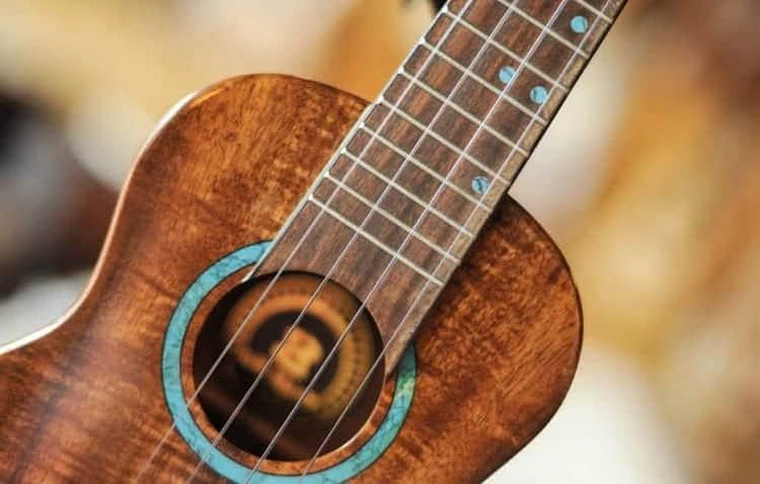
Choosing the right ukulele strings is not just about the instrument’s appearance and general characteristics. Often overlooked, yet crucial, are the strings within the instrument that generate sound. Determining the best strings to opt for is crucial.
Many people assume that such a simple instrument won’t have extensive characteristics. After all, we’re almost always talking about the ukulele.
The division into soprano ukulele or other varieties of this instrument – yes, that’s a common figure of speech. But not very often do we refer to its full, proper name. That’s a shame, because it would make it easier for many people to recognize the strings that are there.
There are several basic types of strings: AGAX, GCEA, DGBE, GDAE, or GCEA low G. They differ in the type of instrument, sound production characteristics, popularity, and – of course – price. Fortunately, the investment in ukulele strings is not very expensive. Interesting sets can be bought for as little as about 15 dollars.
How many strings does a ukulele have?
The classic ukulele is typically associated with four strings. It’s easy to learn to play on such devices, as demonstrated in my YouTube recordings. However, you may also find versions of this instrument with six or even eight strings.
These are advanced instruments, suitable for those who are already at a slightly higher level of proficiency.
Rest assured, if you steadily improve your ukulele skills, you will undoubtedly be ready to buy such a version of this instrument.
Names of the strings in the ukulele
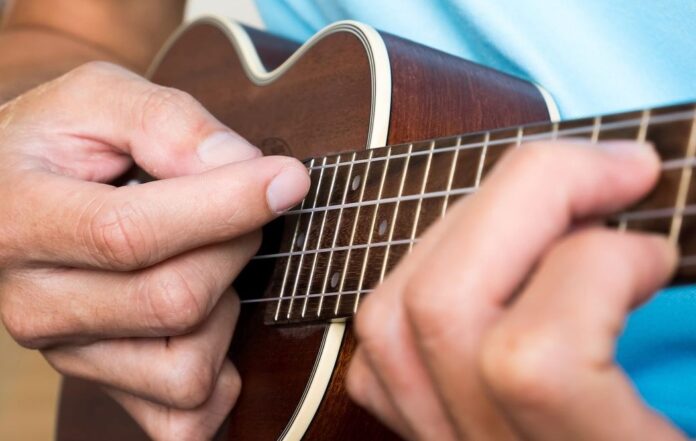
This instrument usually has A, E, C and G strings. We also come across numbers that denote the order number of a particular string, so for example A1, E2, C3 or G4.
A common mistake novices make is to confuse the string designations and label them in the order of A, C, E, G. Be careful when tuning.
Which strings for the ukulele should you choose?
Starting with nylon strings, also known as wound strings, is a good idea. They come in a variety of colors, which can add visual interest to your ukulele. Brands like Jeremi, Galli, and Savarez are well-regarded within the ukulele community.
Before you buy, consider the technical specifications. Some manufacturers blend their strings with other materials to enhance their durability and tone.
Remember that even the highest-quality ukulele strings have a lifespan. This is due to the fact that strings stretch, which always happens when you play the instrument, causing them to lose their ability to produce a high-quality sound.
If your instrument suddenly loses its characteristic sound, you could try stretching the strings more aggressively.
However, a better solution might be to simply buy new strings. If you enjoy experimenting with sound, any such purchase should be seen as an opportunity rather than a necessity.
Strings in the soprano ukulele
Nylon strings, also known as wound strings, are arguably the most popular type of string on the market. These strings are often used in both acoustic and concert ukuleles, emphasizing their versatility.
Basic sets can be purchased for less than 10 zlotys. Before making a purchase, consider the string tension. We recommend medium tension, often labeled simply as ‘medium’ on the packaging, as it is perfectly optimal for most users.
Strings in a concert ukulele
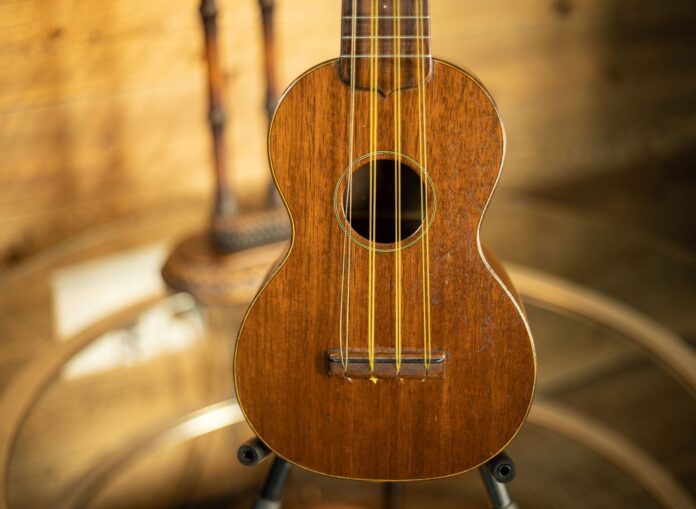
As mentioned earlier, there are not many differences between strings for concert ukuleles and soprano ukuleles.
However, this doesn’t mean that more advanced ukulele players can’t look for strings specifically designed for their instrument.
If you’re seeking high-quality strings, consider the Aquila AQ31U. This set, often recommended, is based on the traditional qualities of CGDA strings. The same manufacturer also offers a set for the GCEA setting.
Regardless of the manufacturer you choose, make sure to check whether the strings will fit your ukulele. This is a common mistake for beginners, who assume that a simple and inexpensive instrument like the ukulele should fit all string sets.
Strings for Tenor Ukuleles
Tenor ukuleles offer a deeper, richer sound compared to their soprano and concert counterparts, largely due to their larger size.
When selecting strings for a tenor ukulele, it’s important to consider both the material and the gauge of the strings, as these factors significantly influence the instrument’s sound and playability.
The most common materials used for tenor ukulele strings are nylon, fluorocarbon, and wound metal. Nylon strings are known for their warm, mellow tone, making them a popular choice for traditional ukulele music.
Fluorocarbon strings, on the other hand, tend to produce a brighter, crisper sound and are more resistant to changes in humidity and temperature. Wound metal strings are often used for the lower notes, providing a richer and more resonant bass sound.
Choosing the Right Strings for Your Playing Style
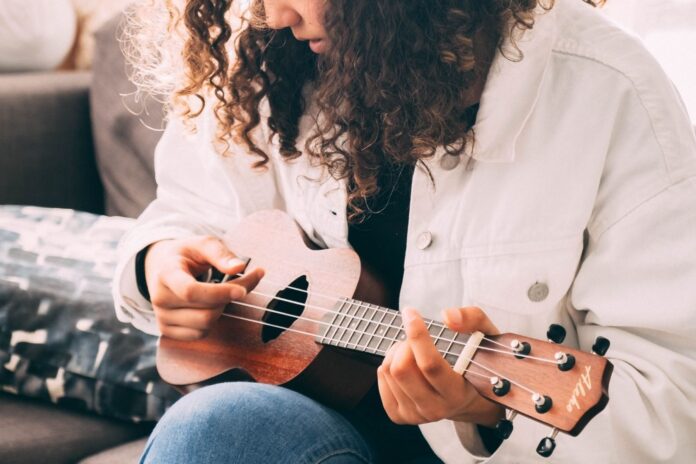
When selecting strings for your tenor ukulele, consider your playing style and the genre of music you prefer. For players who enjoy a traditional, Hawaiian sound, nylon strings are often the best choice.
These strings offer a classic ukulele tone that is soft and warm. If you’re into more contemporary styles or require a brighter sound for recording purposes, fluorocarbon strings might be more suitable.
It’s also important to consider the tension of the strings. Higher tension strings can be harder on the fingers but provide greater volume and a crisper sound. Lower tension strings are easier to play and offer a softer, more mellow tone.
Many professional ukulele players experiment with different string materials and tensions to find the perfect combination for their specific sound and playing style.

